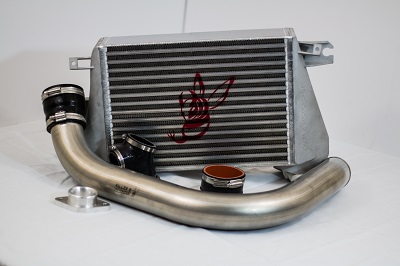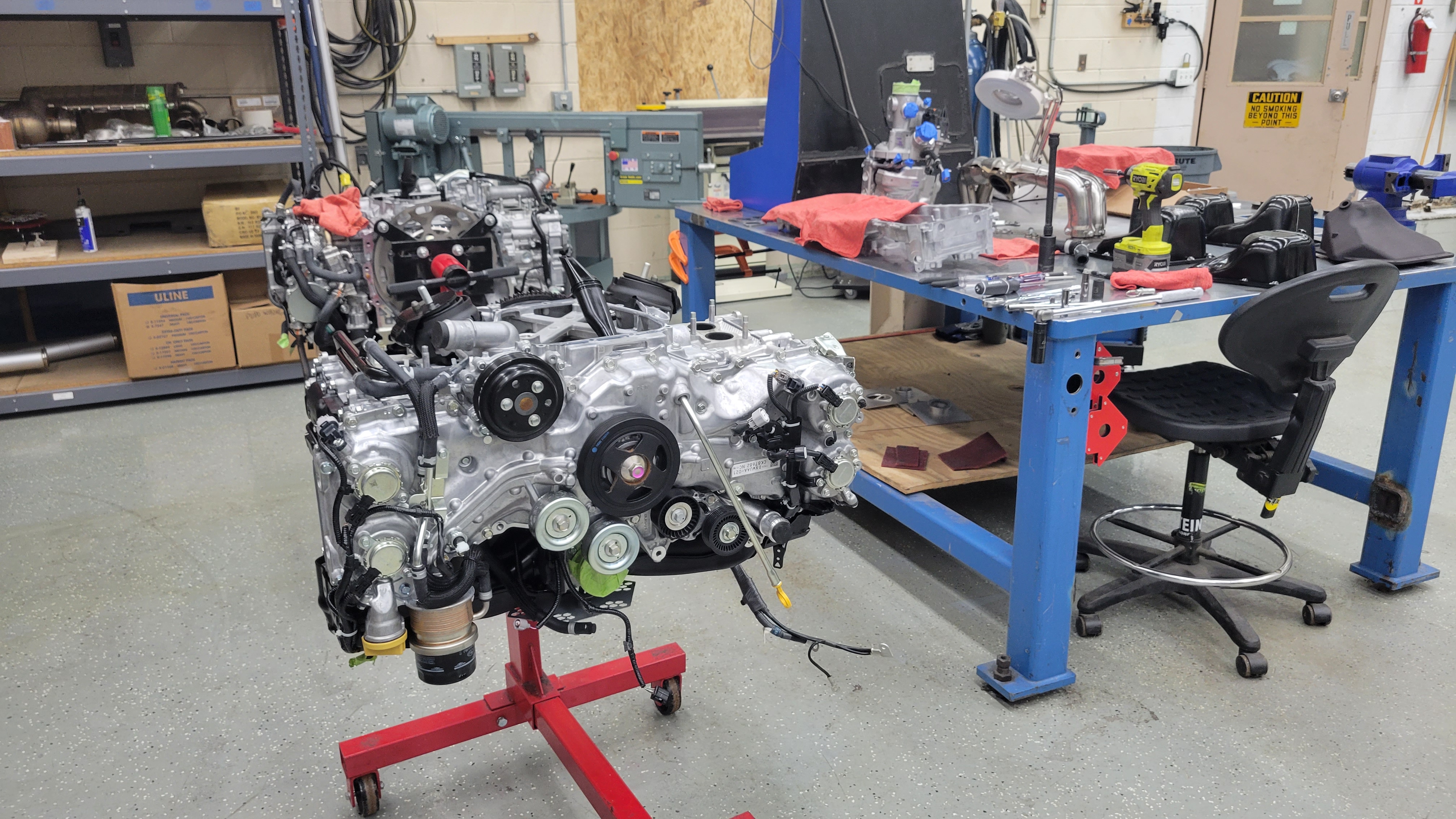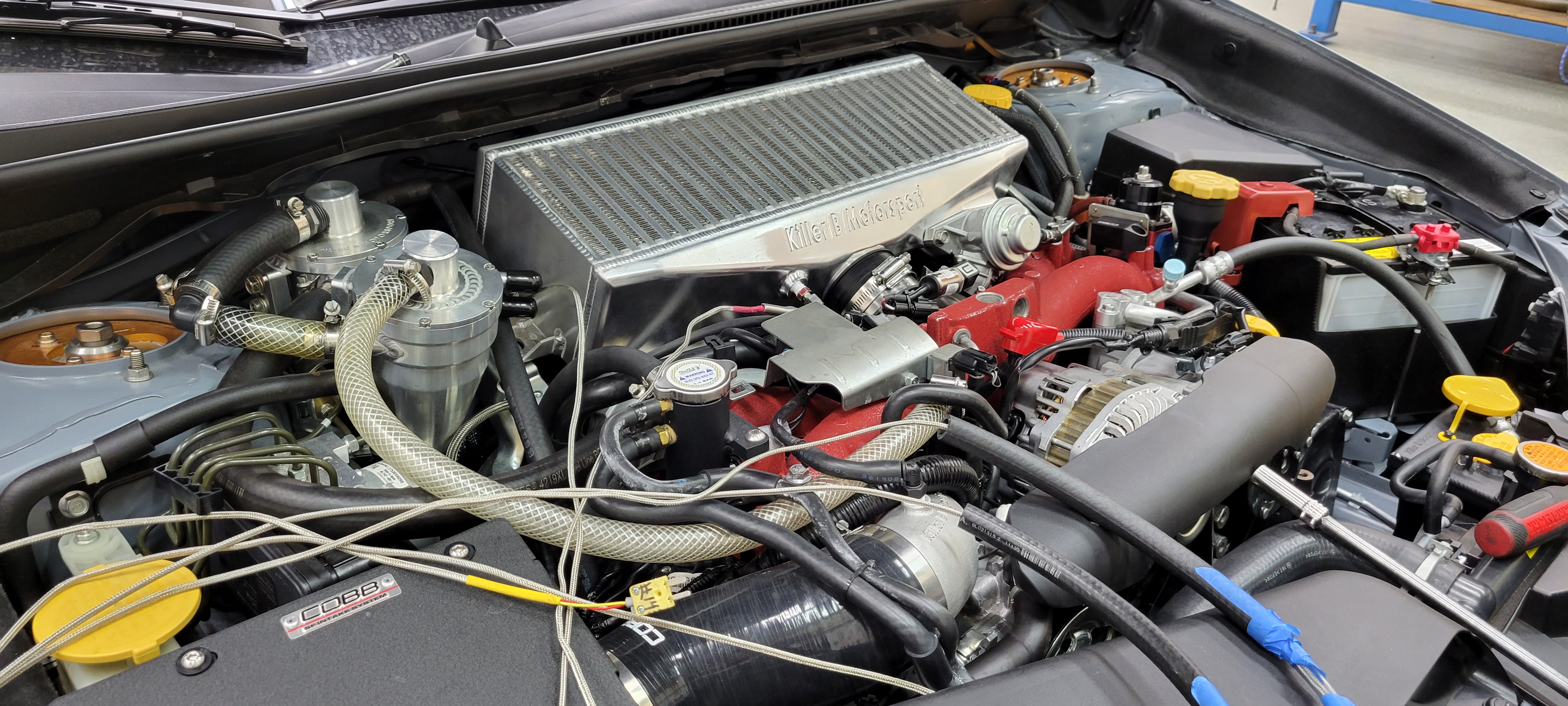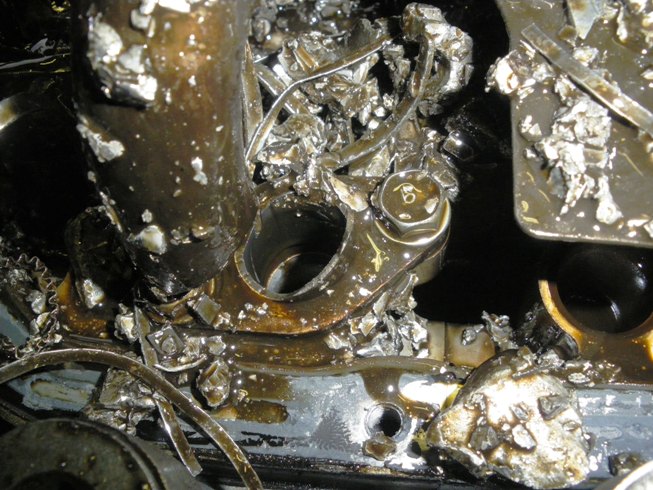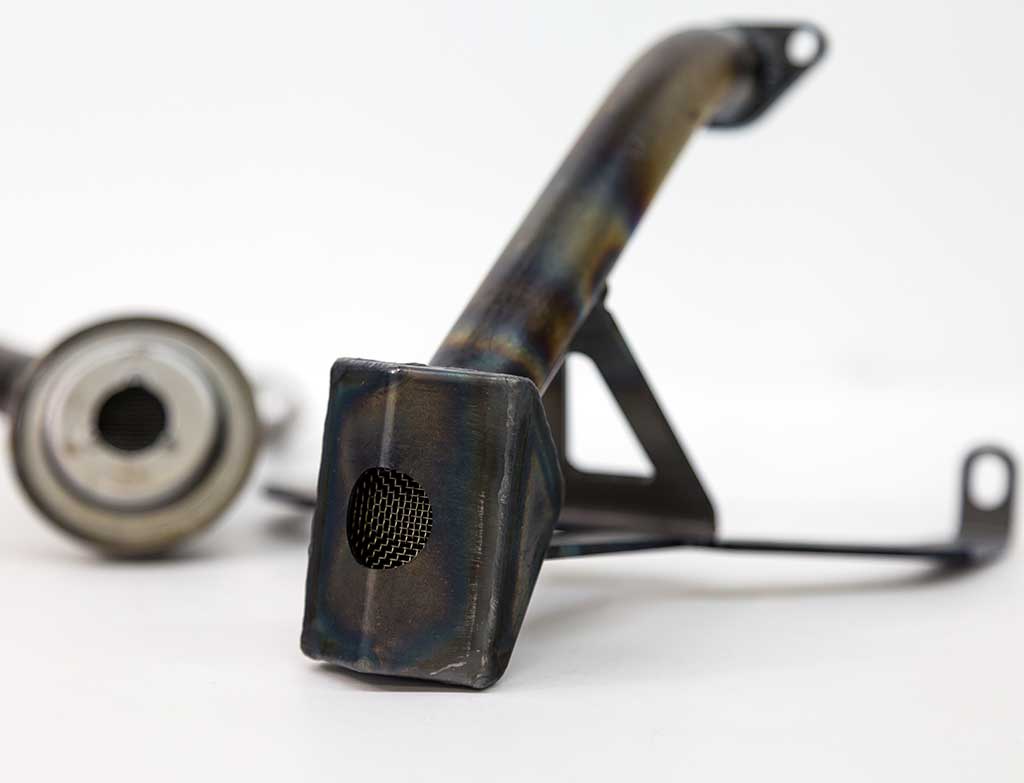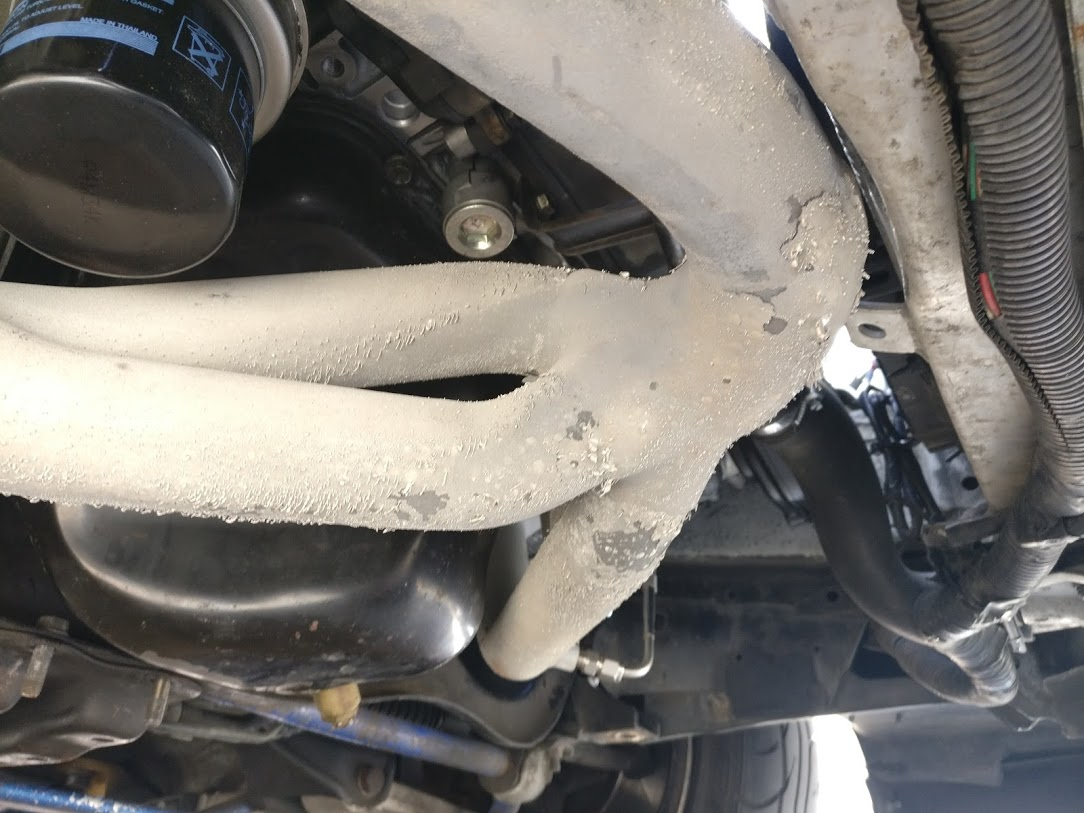Aftercooler / Intercooler 101 (bigger isn't better?)
Aftercooler / Intercooler 101 (bigger isn't better?)
There’s a lot of debate on the forums about what makes a great intercooler; core size, cross-section, fin density, length…? So what’s important? It depends on budget and what you’re doing with your car.
The best advice for someone shopping for an intercooler, is knowing what you’re going to use the car for 95% of the time, budget, what turbocharger you’re using, and the power goals.
Knowing the application and budget are the biggest driving factors. Getting a HUGE intercooler capable of making 2,000hp is going to be a detriment to performance on a 450hp application. Why? Because boost is made by filling and pressurizing the volume between the turbocharger and intake manifold. The smaller this volume, the quicker it fills. Conversely, a huge volume between the two takes longer to fill. A little headroom isn’t a bad thing, but a lot is. Ideally, an intercooler is precisely sized to how many lbs/min the turbocharger can flow. Both turbocharger and intercooler core manufacturers provide efficiency and flow rates that can be matched. The problem with this is that a lot of marketing information is under specific ‘ideal’ conditions, or a different pressure than what will be used, and so on. Adding to that, model-specific manufacturers do not provide off the shelf intercoolers in very many different sizes. Regarding budget, like many things in life, the quality of a heat exchanger (intercooler core) is proportional to price. You can’t buy a new Ferrari for $20K and a $20K car will not be as fast as the Ferrari. This analogy can be used for many things in life and holds true for intercoolers as well, as they are bound by the laws of physics and manufacturing processes used. If there were exceptions to this rule, we’d all be using that magical product.
So you’ve decided on size and have a budget. Now what? This is where the detective work begins. Resources available include forums, shops, friends, tuners, etc. Be wary of bias and less than informed sources. Bias you say? It comes from higher margin products and manufacturers. It doesn’t take a rocket scientist to understand that shops need and desire profit, and a more profitable product is more enticing than one that is not as profitable. Exceptions to this rule are reputable shops that demand top quality and performing products for their own reputation, and for their customers. Manufacturers, on the other hand, tout their products as ‘best performing’, displaying graphs and charts showing magnificent results. This is not independent, comparative or unbiased. We ourselves prefer to share the data we get from shops, not our own, to minimize this effect. When asked how our Aftercooler performs (or any of our products) I will often refer the inquisitor to reach out to a local shop or any local social groups that may have someone running our product. Essentially, I also believe in never trusting the guy ‘selling’ the stuff. Forums are a great resource for information. Unfortunately, there is almost as much misinformation as there is good information. If forums are your preference, read a LOT. Learn who the players are that have no dog in the fight and are respected for their knowledge and capabilities of sharing and relaying useful data.
So you have a power goal, a budget, and feedback from others. Now what? It’s time to form your own thoughts and opinions on what you see when you look at an intercooler. End tanks are fairly easy once you think about how air flows best, and that is to imagine it as water. It doesn’t like to go around corners, it slows down when the cross section gets bigger and speeds up when the cross section is small. For example an intercooler's inlet port is sometimes smaller than the outlet, being the smallest means air is traveling fastest through this area, and with this speed, will want to change direction the least. Knowing this, look for inlet end tanks with smooth flowing features, as well as tapered ends and corners. Avoid sheetmetal end tanks as they have corners that produce turbulence. If the engineer who designed it is worth a salt, under full flow, the airflow is forced across the majority of the core's surface area with minimal turbulence. This ‘best design practice’ assures that the core is being utilized to its maximum.
Moving onto the core, a designer takes several things into consideration. These include capacity, available ambient airflow, size, fitment constraints, etc. Then, engineering principles are applied. Ambient airflow is less effective the thicker the intercooler core is. This can be compounded by location; an indirect path (top mounted) has lower ambient airflow capacity than a more direct path (front mounted). Using a thicker core in a direct airflow location, like the front, will have more effective ambient airflow. Core turbulence and pressure drop function hand in hand. Turbulence is what causes the transmission of heat from charge air to the core. The less turbulence, the less effective the core is at absorbing and transferring heat. Conversely, the higher turbulence increases pressure drop. It becomes a balancing act, but when done properly, a core is used that is as efficient as it can be; with the lowest possible pressure drop. What determines these factors is core design; ambient vs charge path sizes (bars and plates) and ratio to each other. Fin design can be coarse and simple, making it inexpensive to manufacture. On the other side of the coin it can be much more advanced with higher fin density and advanced precise attachment to the bars that promotes ideal transfer from charge to ambient fins. The fin designs themselves can be offset, staggered, and/or louvered to add turbulence for better thermal transfer from air to metal, and back to air. A great core with good engineering behind it, will often have different fin design and features on the ambient flow path and charge flow path, taking advantage of the best characteristics for both conditions to maximize efficiency. The downside is that all these advantages in efficiency comes at a cost, due to the higher manufacturing costs involved.
So, how does this knowledge apply to our (your) own setup? The application of this knowledge is where it all comes together, but we’re not quite done. A thick long intercooler in a top location is a poor choice. You have a hood vent that is the limiting and restricting factor for ambient airflow. Having a shroud distribute air flow across a large core slows that air dramatically, and this is compounded when core thickness is also added. The reduction in efficiency is significant. This is especially important when a load is going to be continuous, like when going through several gears in a drag race or road course racing, and less important for a single gear pull when there is very little ‘load’ on the intercooler. Having no shroud directing air to the core is a bad idea in both top and front mount application. Moving to a front mounted location improves ambient airflow, and often times available space, but adds other challenges like additional intercooling tubing (volume), modifications required for mounting, managing airflow through the core, reduced airflow, and adding heat to the ambient air now going to the radiator (reducing its capacity to cool) as well as the possible deletion of safety components.
Continuing down the path of assuring best efficiency is maintained, we are back at the ‘air flows like water’ premise; it takes the path of least resistance. Shrouding plays an important role here and I cringe every time I see a top mounted setup with no shroud, or a front setup with half the core behind the bumper. Doing this converts the heat exchange (core) into a heat sink. You have a chunk of metal that heat is transmitted to, but the forced active cooling from the ambient airflow has been removed. This example is easy to reproduce with a hose or a bucket of water. Pour it on and see what happens; less goes through the core. Want to get more Mr Wizard with it (if you know who this is, congrats you’re as old as me!) tape some yard on the top center of each side and blast it with blower (yard blower, blower port on a shop-vac, compressed air, etc.) and see what the yarn does. With a shroud in place, the air is forced through (yarn doesn’t move), without the air flows sideways (yarn pointing out) not through. On a more micro level, when this happens, it can create vacuum on the top outer area of the core as air goes across the open ambient area. This will pull with it hot engine bay air from below the core. This is bad. On the front setup, the same holds true and in some instances, can be worse and more difficult to manage. Shrouding from bumper to the front face of the core can be difficult due to limitations in available shroud mounting options. Worse is putting any part of the core behind the bumper where it has no exposure to ambient airflow. Again, this puts us back to a heat sink vs active heat exchange. Changing from unexposed core to a thicker (same cross section) fully exposed core has a dramatic effect, vastly improving the efficiency.
In closing, the information provided here is based on engineering principles that have been proven and time tested in the professional motorsports industry. The more we as customers know, the more informed and smarter buying choices we make. This is my goal for this post, and I hope it serves you well.

